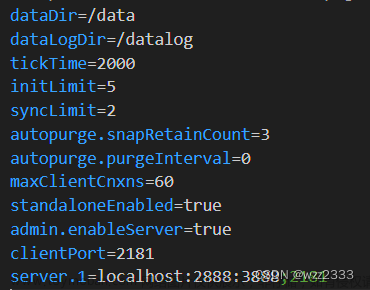前言
开发人员写的SQL语句中经常会用到in,exists,not in,not exists 这类子查询,通常,含in、exists的子查询称为半连接(semijoin),含not in、 not exists的子查询被称之为反连接,经常会有技术人员来评论in 与exists 效率孰高孰低的问题,我在SQL优化工作中也经常对这类子查询做优化改写,比如半连接改为内连接,反连接改为外连接等,哪个效率高是要根据执行计划做出判断的,本文不是为了讨论效率问题,是要提醒一点:not in子查询的结果集含NULL值时,会导致整个语句结果集返回空,这可能造成与SQL语句书写初衷不符。
实验
创建实验表t1,t2
greatsql> create table t1(c1 int primary key,c2 varchar(10), key idx_c1(c2));
greatsql> create table t2(c1 int primary key,c2 varchar(10)),key idx_c1(c2));
greatsql> insert into t1 values(1,'a'),(2,'b');
greatsql> insert into t2 values(1,'a'),(2,'c');
观察下面两条语句:
select * from t1 where t1.c2 not in (select t2.c2 from t2);
select * from t1 where not exists (select 1 from t2 where t2.c2=t1.c2);
这两个语句,从表达的含义来看是等价的,都是查询t1表中c2列值在t2表的c2列值中不存在的记录。
从子查询类型来看,第一条语句属于非关联查询,第二条语句属于关联子查询。所谓非关联子查询就是子查询中内查询可以独立执行,与外查询没有关系,互不影响。而关联子查询的执行依赖于外部查询,通常情况下都是因为子查询中的表用到了外部的表,并进行了条件关联,因此每执行一次外部查询,子查询都要重新计算一次。
从连接类型来看,使用not in与not exists子查询构造的语句都属于反连接,为了控制连接顺序与连接方式,这种反连接经常被改写为外连接,t1 与t2使用左外连接,条件加上右表t2的连接列 is null,也就是左外连接时没有关联上右表的数据,表达了这个含义“t1表中c2列值在t2表的c2列值中不存在的记录”。反连接改写为外连接,不会导致关联结果集放大,因为没有关联上的t1表数据只显示1条,半连接改为内连接时要注意去重。外连接语句如下所示:
greatsql> select t1.* from t1 left join t2 on t1.c2=t2.c2 where t2.c2 is null;
所以本质表达含义上,上面的三条语句都等价。
下面看一下三条语句的执行结果:
greatsql> select * from t1 where t1.c2 not in (select t2.c2 from t2);
+----+------+
| c1 | c2 |
+----+------+
| 2 | b |
+----+------+
1 row in set (0.00 sec)
greatsql> select * from t1 where not exists (select 1 from t2 where t2.c2=t1.c2);
+----+------+
| c1 | c2 |
+----+------+
| 2 | b |
+----+------+
1 row in set (0.01 sec)
greatsql> select t1.* from t1 left join t2 on t1.c2=t2.c2 where t2.c2 is null;
+----+------+
| c1 | c2 |
+----+------+
| 2 | b |
+----+------+
1 row in set (0.00 sec)
可以看出就目前的数据,三条语句执行结果是相同的。
下面向子查询的t2中插入一条c2列为null的记录。
greatsql> insert into t2 values(3,null);
再观察一下三条语句的执行结果:
greatsql> select * from t1 where t1.c2 not in (select t2.c2 from t2);
Empty set (0.00 sec)
greatsql> select * from t1 where not exists (select 1 from t2 where t2.c2=t1.c2);
+----+------+
| c1 | c2 |
+----+------+
| 2 | b |
+----+------+
1 row in set (0.00 sec)
greatsql> select t1.* from t1 left join t2 on t1.c2=t2.c2 where t2.c2 is null;
+----+------+
| c1 | c2 |
+----+------+
| 2 | b |
+----+------+
1 row in set (0.00 sec)
可以看出,not exists表示的关联子查询与 外连接方式表达的两条语句结果相同,而not in表示的非关联子查询的结果集为空。这是因为子查询select t2.c2 from t2 查询结果含有NULL值导致的。NULL属于未知值,无法与其他值进行比较,无从判断,返回最终结果集为空。这一点在MySQL与Oracle中返回结果都是一致的。如果想表达最初的含义,需要将子查询中NULL值去除。
greatsql> select * from t1 where t1.c2 not in (select t2.c2 from t2 where t2.c2 is not null);
+----+------+
| c1 | c2 |
+----+------+
| 2 | b |
+----+------+
1 row in set (0.02 sec)
那么如果t1表的c2列也插入一条NULL值的记录后,结果集会怎样呢,两个表都存在c2列为NULL的值数据,那么t1表这条NULL值数据能否出现在最终结果集中呢?
greatsql> insert into t1 values(3,null);
Query OK, 1 row affected (0.07 sec)
greatsql> select * from t1 where t1.c2 not in (select t2.c2 from t2 where t2.c2 is not null);
+----+------+
| c1 | c2 |
+----+------+
| 2 | b |
+----+------+
1 row in set (0.00 sec)
greatsql> select * from t1 where not exists (select 1 from t2 where t2.c2=t1.c2);
+----+------+
| c1 | c2 |
+----+------+
| 3 | NULL |
| 2 | b |
+----+------+
2 rows in set (0.00 sec)
greatsql> select t1.* from t1 left join t2 on t1.c2=t2.c2 where t2.c2 is null;
+----+------+
| c1 | c2 |
+----+------+
| 3 | NULL |
| 2 | b |
+----+------+
2 rows in set (0.00 sec)
从执行结果来看,使用not in非关联子查询,其执行结果与其他两条语句的执行结果还是不同,因为t1.c2 使用not in在参与比较时就隐含了t1.c2 is not null的含义,所以最终结果集中不含(3,NULL)这条数据。
而not exists关联子查询,在将外查询的NULL值传递给内查询时执行子查询 select * from t2 where t2.c2=NULL,子查询中找不到记录,所以条件返回false, 表示not exists 为true,则最终结果集中含(3,NULL)这条记录。
左外left join 与 not exists相同,左表的NULL值在右表中关联不上数据,所以要返回(3,NULL)这条数据。这里要注意NULL 不等于 NULL。
greatsql> select NULL=NULL;
+-----------+
| NULL=NULL |
+-----------+
| NULL |
+-----------+
1 row in set (0.01 sec)
说到这里,GreatSQL支持<=>安全等于这个符号,用来判断NULL值:当两个操作数均为NULL时,其返回值为1而不为NULL;而当一个操作数为NULL时,其返回值为0而不为NULL。
greatsql> select NULL<=>NULL;
+-------------+
| NULL<=>NULL |
+-------------+
| 1 |
+-------------+
1 row in set (0.00 sec)
greatsql> select 1<=>NULL;
+----------+
| 1<=>NULL |
+----------+
| 0 |
+----------+
1 row in set (0.00 sec)
所以not exists 子查询中的= 换成 <=> 时,最终结果集中去除了(3,NULL)这条数据。
greatsql> select * from t1 where not exists (select 1 from t2 where t2.c2<=>t1.c2);
+----+------+
| c1 | c2 |
+----+------+
| 2 | b |
+----+------+
1 row in set (0.00 sec)
注意,一般表关联时不使用<=>安全等于这个符号,想象一下,如果关联的两个表在关联字段上都存在很多NULL记录,关联后的结果集对NULL记录的关联是以笛卡尔积的形式体现的,严重影响效率,严格来说关联字段都为NULL值不能算作能匹配上。
结论
-
使用not in 的非关联子查询注意NULL值对结果集的影响,为避免出现空结果集,需要子查询中查询列加
is not null条件将NULL值去除。 -
实际使用时注意:需求表达的含义是否要将外查询关联字段值为NULL的数据输出,not in隐含了不输出。
-
一般认为not exists关联子查询与外连接语句是等价的,可以进行相互改写。
select * from t1 where not exists (select 1 from t2 where t2.c2=t1.c2);
select t1.* from t1 left join t2 on t1.c2=t2.c2 where t2.c2 is null;
如果不需要输出外查询中关联字段为NULL值的数据,还需再加条件 t1.c2 is not null。
select * from t1 where not exists (select 1 from t2 where t2.c2=t1.c2) and t1.c2 is not null;
select t1.* from t1 left join t2 on t1.c2=t2.c2 where t2.c2 is null and t1.c2 is not null;
这样写就与select * from t1 where t1.c2 not in (select t2.c2 from t2 where t2.c2 is not null)等价了。
Enjoy GreatSQL 😃
关于 GreatSQL
GreatSQL是适用于金融级应用的国内自主开源数据库,具备高性能、高可靠、高易用性、高安全等多个核心特性,可以作为MySQL或Percona Server的可选替换,用于线上生产环境,且完全免费并兼容MySQL或Percona Server。
相关链接: GreatSQL社区 Gitee GitHub Bilibili
GreatSQL社区:
社区博客有奖征稿详情:https://greatsql.cn/thread-100-1-1.html

技术交流群:
微信:扫码添加
GreatSQL社区助手微信好友,发送验证信息加群。文章来源:https://www.toymoban.com/news/detail-840178.html
 文章来源地址https://www.toymoban.com/news/detail-840178.html
文章来源地址https://www.toymoban.com/news/detail-840178.html
到了这里,关于NOT IN子查询中出现NULL值对结果的影响你注意到了吗的文章就介绍完了。如果您还想了解更多内容,请在右上角搜索TOY模板网以前的文章或继续浏览下面的相关文章,希望大家以后多多支持TOY模板网!









